Seginus, designated as Gamma Boötis, is a binary star situated in the constellation of Boötes. The primary star, Segninus, is a Delta Scuti variable type of star.
Key Facts & Summary
- Seginus is located at around 86.8 light-years / 26.61 parsecs away from the Sun.
- The apparent magnitude of the Seginus star system is +3.03, while the absolute magnitude has been estimated at around +0.91.
- Gamma Boötis is the primary component of a double star system that also consists of the star UCAC2 45176266.
- The primary star of the system, Gamma Boötis, is a Delta Scuti variable type of star, displaying brightness variations from magnitude +3.02 to +3.07 within a period of 1.13 hours.
- Seginus / Gamma Boötis is a bluish-white star of spectral type A7 III.
- The primary star has 3.5 solar radii while its mass remains for the moment, unknown. 3.5 solar radii are equivalent to around 2.4 million km or 1.4 million mi.
- Gamma Boötis is 34 times brighter than our Sun.
- The average surface temperatures on Gamma Boötis / Seginus has been estimated at around 7,800 K, hotter than on our Sun.
- The primary star is quite a fast spinner as its rotational velocity has been recorded at around 150 km / 93.2 mi per second.
- The radial velocity of Seginus is -35.5 km / -22 mi per second.
- Seginus lies in the vicinity of two spiral galaxies, namely NGC 5698, and PGC 51713.
- Seginus position in the night sky marks the celestial Herdsman’s left shoulder.
- The constellation of Boötes – the celestial Herdsman, is the 14th largest constellation in the sky.
- The constellation was first mentioned by its name in Homer’s Odyssey, however, it was known long before that.
- In the 20th century, the Czech astronomer Antonin Becvar listed Gamma Boötis as Haris – the name comes from Arabic and it means “the guard of the North” referring to the constellation of Boötes.
The name of the primary star, Seginus, is of unknown origin, however, some theorize that it may come from the Latinisation of an Arabic form of Theguius, the Greek name for the Boötes constellation.
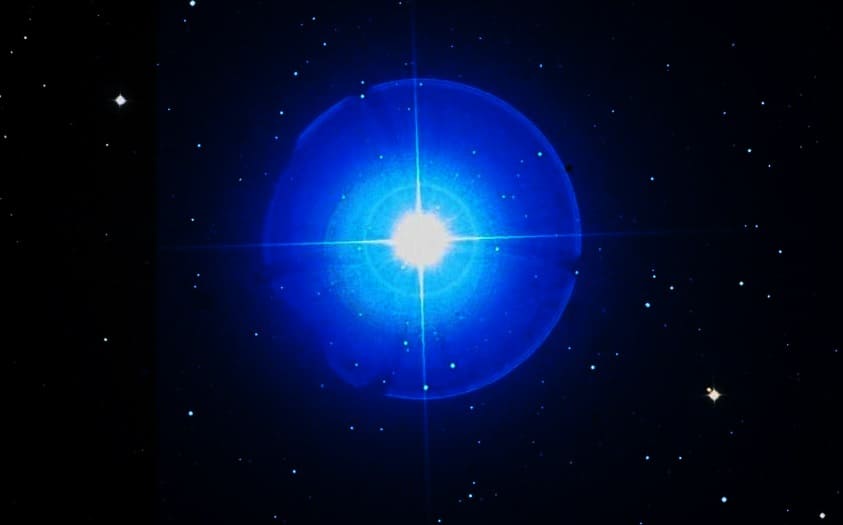
It has also been spelled as Segin or Ceginus. This name was officially approved by the IAU for the primary star in 2016. It only applies to the component Gamma Boötis Aa.
Formation
Seginus / Gamma Boötis formed from an interstellar medium of dust and gas. Gravity pulled the swirling gas and dust together until it reached the right temperature and thus the fourth brightest star of the constellation of Boötes, Seginus, emerged.
The exact age of Seginus is currently unknown, however, it surely is several millions of years old. The other star of the Seginus star system is also shrouded in mystery and its age is also unknown.
Distance, Size, and Mass
Seginus / Gamma Boötis is located at a distance of around 86.8 light-years / 26.61 parsecs away from the Sun. The primary star, Seginus, has a radius of 3.5 solar radii, or 350% of the Sun’s radius.
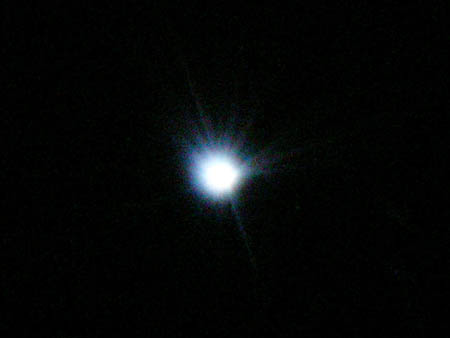
Its mass is unknown, however, based on its radius is surely is more massive than our sun, while its overall size would make it around seven times bigger than our Sun.
Other Characteristics
Seginus / Gamma Boötis is a bluish-white star of spectral type A7 III. The star is around 34 times brighter than our Sun, having surface average temperatures of around 7,800 K, or 1.3 times hotter than our Sun.
Seginus is a fast-spinning star having a rotational velocity of around 150 km / 93.2 mi per second. Usually, stars that have such a rotational speed are deformed or posses an envelope of dust and gas, such things haven’t been confirmed on Seginus yet.
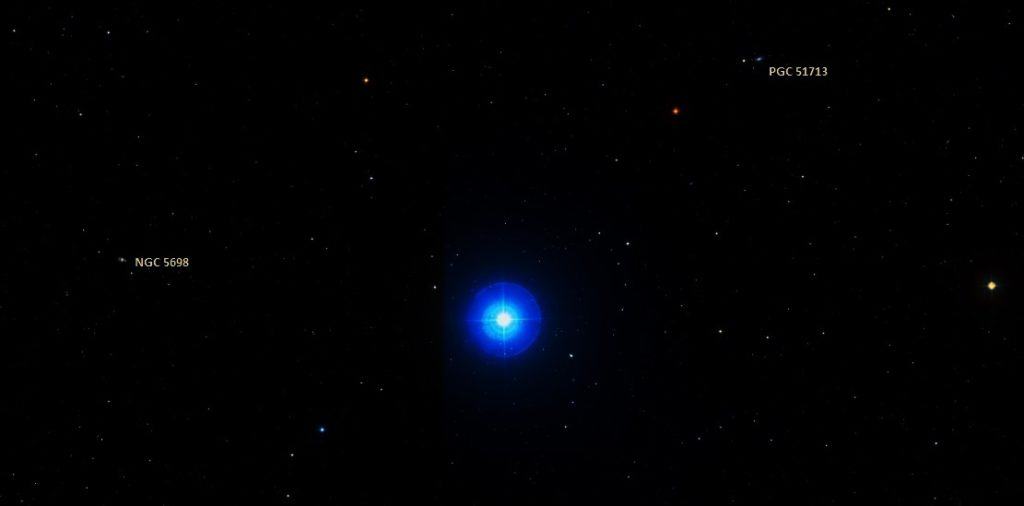
The apparent magnitude of Saginus is +3.03, and its absolute magnitude is +0.91. However, Saginus is a Delta Scuti variable star whose brightness fluctuates as a result of both radial and non-radial pulsations on its surface.
The star expands and contracts, changing its radius to maintain spherical shape and thus some parts of its surface move inwards, while other parts move outwards simultaneously. This creates brightness variations, from magnitude +3.02 to +3.07, within a period of 1.13 hours.
Star System
Seginus / Gamma Boötis is the primary component of a double star system that also consists of the star UCAC2 45176266. The star system Is designated as WDS J14321+3818, and the two components are referred to as A and B.
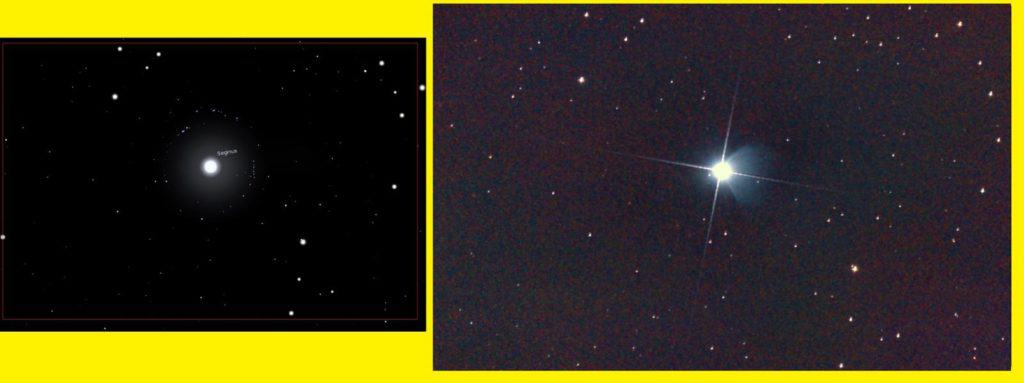
Location
Seginus / Gamma Boötis is located in the constellation of Boötes, the celestial herdsman. Seginus is the fourth brightest star in the constellation after Arcturus, Izar, and Muphrid.
The constellation of Boötes is the 13th largest in the sky, and it is one of the ancient Greek constellations first listed by the astronomer Ptolemy in the 2nd century CE.
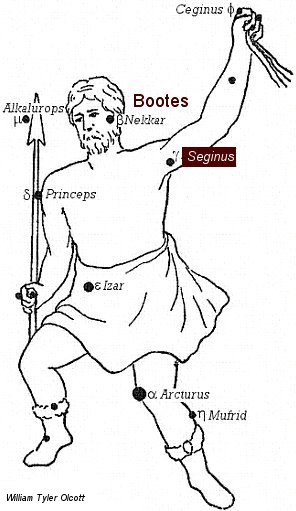
However, this constellation was known long before Ptolemy’s time. One of its first mentions occurred in Homer’s Odyssey, but the constellation was known prior to that as well.
Seginus marks the celestial Herdsmen’s left shoulder, and it is easy to find since the star is also part of the kite-shaped asterism that dominates the Boötes constellation.
Seginus lies in the region of the sky between the handle of the Big Dipper and the brighter Boötes stars Arcturus and Izar. Two spiral galaxies are also near Seginus.
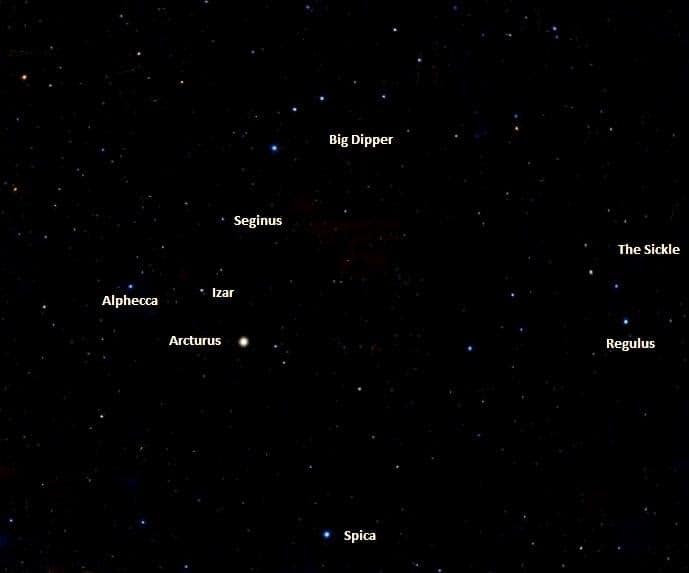
In the constellation of Boötes, there are many interesting deep-sky objects and stars, such as Arcturus, the brightest star in the northern celestial hemisphere, Izar, Alkalurops, the lenticular galaxy NGC 5548, the spiral galaxies NGC 5248, NGC 5676, or the globular cluster NGC 5466, among many other things. The best time to view the stars and the deep-sky objects of the Boötes constellation is during the month of June.
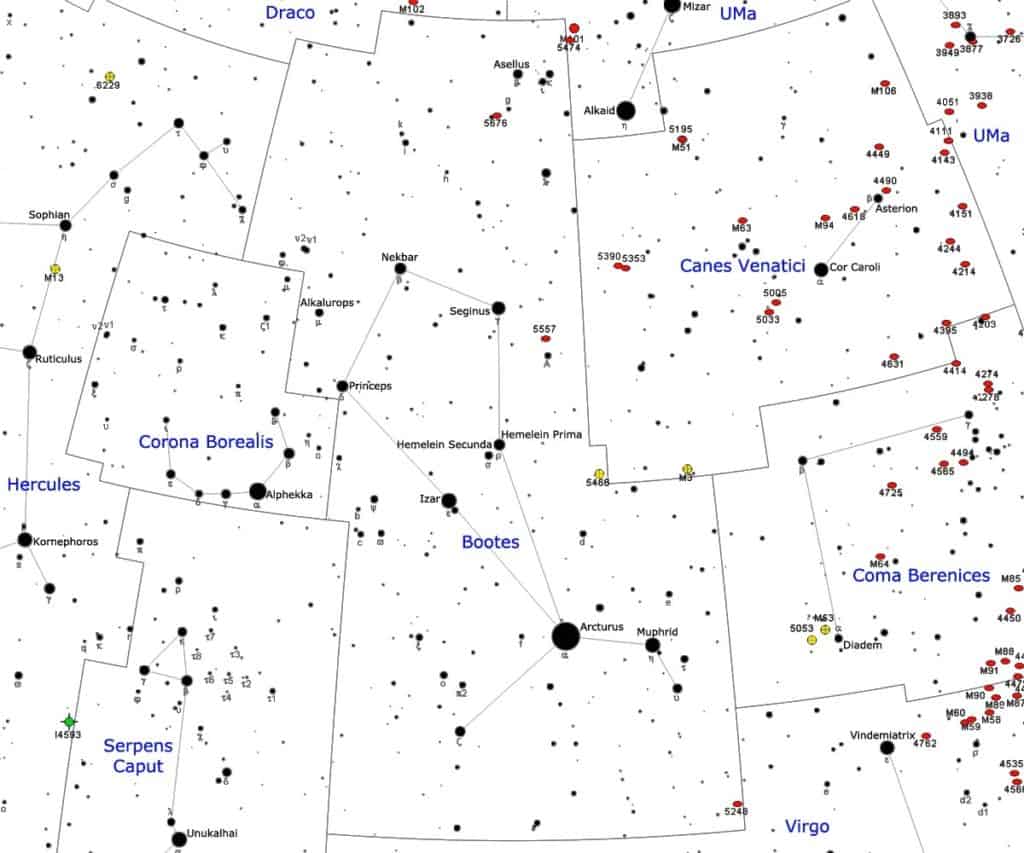
The Future
Much remains unknown about Seginus and its properties, and thus it is difficult to speculate its future. However, it is clear that Seginus will remain one of the dominant stars of the Boötes constellation for many more millions of years.
Did you know?
- In the old Arabic astronomy, Seginus was part of the asterism known as Al’Dhi’bah, meaning “female wolves/hyenas”, together with the stars Nekkar – Beta Boötis, Delta Boötis, and Alkalurops – Mu Boötis.
- The Chinese know Seginus as Twinkling Indicator – Twinkling Indicator is a Chinese asterism consisting of only Seginus, and it is part of the Chinese Root mansion.
- The Roman author Marcus Manilus called Seginus the prona Lycaonia, meaning “sloping towards Lycaon” – referring to the Ursa Major constellation – the Great Bear – which was associated with Callisto, who was turned into a bear by Hera. Callisto was the daughter of the Arcadian King Lycaon and thus she was known as Lycaonia – the constellation of Boötes itself was called Lycaon.
- In the 17th century, the Egyptian astronomer Al Achsasi al Mouakket listed Seginus as Menkib al Aoua al Aisr – “the left shoulder of the barker” – the name was later translated into Latin as Humerus Sinister Latratoris.
Sources:
Image sources:
- https://www.star-facts.com/wp-content/uploads/2019/10/Seginus.jpg
- https://astrologyking.com/wp-content/uploads/seginus-star-gamma-bootis.jpg
- https://www.star-facts.com/wp-content/uploads/2019/10/Seginus-NGC-5698-and-PGC-51713.jpg?189db0&189db0
- https://www.cloudynights.com/uploads/monthly_06_2015/post-228985-0-28729900-1433431611.jpg
- https://www.constellationsofwords.com/images/stars/seginus.JPG
- https://www.star-facts.com/wp-content/uploads/2019/10/Seginus-location.jpg?189db0&189db0
- https://www.star-facts.com/wp-content/uploads/2019/09/Bo%C3%B6tes-constellation.jpg?189db0&189db0
